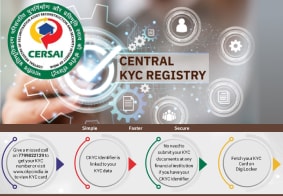CKYC Registry
-
Customer Service Contact us Service request Locate a branch
Find all the help you need
Scan the QR, get our app, and find help on your fingertips

Help CenterSupport topics, Contact us, FAQs and more
-
Login
Are you ready for an upgrade?
Login to the new experience with best features and services
-
Login
Are you ready for an upgrade?
Login to the new experience with best features and services
- Accounts
-
Deposits
IDFC FIRST Bank Deposits
View all Deposits -
Loans
IDFC FIRST Bank Loans
View all Loans - Wealth & Insure
-
Payments
IDFC FIRST Bank Payments
View all Payments -
Cards
IDFC FIRST Bank Cards
View all Cards - Blogs
- Corporate Account
-
Cash Management Services
IDFC FIRST Bank Cash Management Services
View all Cash Management Services - Supply Chain Finance
-
Corporate Lending
IDFC FIRST Bank Lending
View all -
Treasury
IDFC FIRST Bank Treasury
See more details - NBFC Financing
Support topics, Contact us, FAQs and more
- IDFC FIRST Bank Accounts
-
Savings Account
-
Corporate Salary
Account -
Senior Citizens
Savings Account -
First Power
Account -
Current Account
-
NRI Savings
Account -
TASC Institutional
Account -
Savings Account
Interest Calculator
- IDFC FIRST Bank Deposits
-
Fixed Deposit
-
Recurring Deposit
-
NRI Fixed Deposit
-
Safe Deposit Locker
-
FD Calculator
-
RD Calculator
- IDFC FIRST Bank Loans
-
Personal Loan
-
Consumer Durable
Loan -
Home Loan
-
Business Loan
-
Professional Loan
-
Education Loan
-
New Car Loan
-
Pre-owned Car Loan
-
Two Wheeler Loan
-
Pre-owned Two
Wheeler Loan -
Commercial Vehicle
Loan -
Gold Loan
-
Loan Against Property
-
Loan Against Securities
-
Easy Buy EMI card
-
Personal Loan
EMI Calculator -
Education Loan
EMI Calculator -
Home Loan
EMI Calculator
- IDFC FIRST Bank Wealth & Insure
-
FIRST Select
-
FIRST Wealth
-
FIRST Private
-
Mutual Funds
-
Sovereign Gold Bond
-
Demat Account
-
Term Insurance
-
Life Insurance
-
Health Insurance
-
General Insurance
-
Bonds
-
Loan Against
Securities -
Portfolio Management
Service
- IDFC FIRST Bank Payments
-
FASTag
-
Credit Card
Bill Payments -
UPI
-
Funds Transfer
-
Forex Services
-
Pay Loan EMI
- IDFC FIRST Bank Cards
-
Ashva :
Metal Credit Card -
Mayura :
Metal Credit Card -
FIRST Millennia
Credit Card -
FIRST Classic
Credit Card -
FIRST Select
Credit Card -
FIRST Wealth
Credit Card -
FIRST WOW!
Credit Card -
Deals
-
Debit Cards
-
Co-branded Cards
-
Credit Card
EMI Calculator -
FIRST Corporate
Credit Card -
FIRST Purchase
Credit Card -
FIRST Business
Credit Card
- Premium Metal Credit Cards
-
AshvaLifestyle1% Forex₹2,999
-
MayuraLifestyleZero Forex₹5,999
-
FIRST PrivateInvite Only
- Best for travellers
-
MayuraZero ForexMetal₹5,999
-
Ashva1% ForexMetal₹2,999
-
FIRST WOW!Zero ForexTravelLifetime Free
-
FIRST SWYPTravel OffersEMI₹499
-
FIRST Select1.99% ForexLifestyleLifetime Free
-
FIRST Wealth1.5% ForexLifestyleLifetime Free
-
Club VistaraTravelLifestyle₹4,999
-
IndiGo IDFC FIRST Dual Credit CardTravelLifestyle₹4,999
- Max benefits, Free for life
-
FIRST Classic10X RewardsShoppingNever Expiring Rewards
-
FIRST Millennia10X RewardsShoppingNever Expiring Rewards
-
FIRST Select10X RewardsLifestyle1.99% Forex
-
FIRST Wealth10X RewardsLifestyle1.5% Forex
-
FIRST WOW!RewardsTravelZero Forex
-
LIC ClassicRewardsInsuranceShopping
-
LIC SelectRewardsInsuranceShopping
- Reward Multipliers
-
AshvaLifestyleMetal₹2,999
-
MayuraLifestyleZero Forex₹5,999
-
FIRST ClassicNever Expiring RewardsShoppingLifetime Free
-
FIRST MillenniaNever Expiring RewardsShoppingLifetime Free
-
FIRST SelectNever Expiring RewardsLifestyleLifetime Free
-
FIRST WealthNever Expiring RewardsLifestyleLifetime Free
- Rewards & Credit on UPI
-
FIRST Power+FuelUPI₹499
-
FIRST PowerFuelUPI₹199
-
FIRST EA₹NVirtual1% Cashback₹499
-
FIRST DigitalVirtualUPI₹199
-
IndiGo IDFC FIRST Dual Credit CardUPITravelDual cards
- Fuel and Savings
-
FIRST PowerRewardsUPI₹199
-
FIRST Power+RewardsUPI₹499
-
LIC ClassicRewardsInsuranceShopping
-
LIC SelectRewardsInsuranceShopping
- Express and Flaunt
-
AshvaMetal1% Forex₹2,999
-
MayuraMetalZero Forex₹5,999
-
FIRST SWYPEMIOfferMAX₹499
-
FIRST MillenniaRewardsShoppingLifetime Free
- FD Backed rewarding Credit Cards for all
-
FIRST EA₹NVirtualCashback₹499
-
FIRST WOW!Zero ForexTravelLifetime Free
-
CreditPro Balance TransferTransfer & SaveReduce InterestPay Smartly
- IDFC FIRST Bank NRI Forex Solutions
-
Send money to India-Wire transfer
-
Send money to India-Digitally
-
Send money abroad
-
Max Returns FD (INR)
- IDFC FIRST Bank MSME Accounts
-
Platinum Current
Account -
Gold
Current Account -
Silver Plus
Current Account -
Merchant Multiplier
Account -
Agri Multiplier
Account -
TASC Institutional
Account -
Dynamic Current
Account -
World business
Account -
First Startup
Current Account
- IDFC FIRST Bank Business Loans
-
Business Loan
-
Professional Loan
-
Loan Against Property
-
Business Loan for Women
-
Working Capital Loan
-
Construction Equipment Loan
-
Machinery Loan
-
Healthcare Equipment Loan
- IDFC FIRST Bank Business Solutions
-
Payment Solutions
-
Tax Payments
-
Doorstep Banking
-
Point of Sale (POS)
-
Escrow Accounts
-
NACH
-
Payment Gateway
-
UPI
-
Virtual Accounts
-
As per amendment in the Income Tax Rules, PAN or Aadhaar are to be mandatorily quoted for cash deposit or withdrawal aggregating to Rupees twenty lakhs or more in a FY. Please update your PAN or Aadhaar. Kindly reach out to the Bank’s contact center on 1800 10 888 or visit the nearest IDFC FIRST Bank branch for further queries.
-
-
Most Searched
Sorry!
We couldn’t find ‘’ in our website
Here is what you can do :
- Try checking the spelling and search
- Search from below suggestions instead
- Widen your search & try a more generic keyword
Suggested
Get a Credit Card
Enjoy Zero Charges on All Commonly Used Savings Account Services
Open Account Now
Education Loan
How to turn your child's aspirations into reality with a child education plan
Key Takeaways
A well-structured child education plan helps parents tackle the rising cost of education without financial strain.
Various tools, such as fixed deposits, mutual funds, insurance-based plans, and education loans, can help financially plan your child’s education.
However, amidst the tools available, education loans offer the most flexibility, tax benefits, low interest rate, longer tenure, etc.
The best child education plan provides comprehensive funding, tuition coverage, accommodation, and study-related expenses without depleting savings.
The IDFC FIRST Bank Education Loan offers up to ₹2 crore funding, competitive interest rates, and flexible repayment options, making it an ideal choice for securing your child's future.
Watching your child walk across the graduation stage is one of the proudest moments in a parent's life. But when that moment arrives, will you be celebrating wholeheartedly, or worrying about how you managed to afford it?
Education inflation in India is at an all-time high, standing at a staggering 11-12% as of 2024. As college fees continue to rise, many parents are being forced to choose between financial security and giving their child a quality education.
The question then becomes—how do you financially prepare for the future? This is where a structured child education plan is helpful. Find out everything you must know about financial planning for education and learn how to secure your child’s future today!
READ MORE
What is a child education plan and how does it work?
A well-structured strategy is the key to meeting any financial goal—whether it's buying a house, planning retirement, or funding your child's education. This is why you need a child education plan—it helps you strategise the best ways to overcome the rising education costs so that you don't have to scramble for funds at the last minute.
As news about rising fees for schools, colleges, and universities becomes increasingly common, financial planning for education has become necessary. Parents need to account for various factors including the tuition fees demanded at top institutions and the rising cost of living and other expenses.
Fortunately, there are a mix of financial tools available today to help you prepare for these costs. Fixed deposits, mutual funds, insurance-based plans, and education loans are a few of the many financial avenues to help you plan for your child's future. Here's a breakdown of what these different avenues look like as well as their pros and cons.
Investment option |
What is it |
Pros |
Cons |
Fixed deposit |
A low-risk investment avenue where you deposit money at a predetermined interest rate for a fixed tenure |
Guaranteed returns and no market risk |
Low returns that do not keep up with education inflation |
Mutual funds |
A market-linked investment avenue where money is pooled into a mix of stocks, bonds, or both |
Higher returns with the potential for long-term wealth creation |
Higher market risk that may only be offset by patience and strategic, disciplined investment |
Insurance-based plans |
A combination of life insurance and savings that helps build a corpus over time |
Provides life-long cover along with savings |
Lower returns and limited liquidity |
Education loan |
A financing option specifically designed for education that covers tuition, accommodation, and other study-related expenses |
Allows education funding without depleting savings while providing flexible repayment options and tax benefits |
Creates debt, but repayment terms are manageable |
How to plan for your child’s higher education?
Of all the avenues available to parents today, education loans stand out as a clear winner when it comes to funding your child’s higher education. This is because their ease of accessibility, flexible repayment options, and tax benefits make them the most practical choice.
Some reasons why an education loan is the best child education plan for your family include –
- An education loan ensures no upfront financial burden by allowing repayments through EMIs after course completion.
- It helps preserve your family's financial security since you don't have to dip into your investments to fund your child's higher studies.
- A good education loan not only covers an institution's tuition but also provides funding for major expenses, such as accommodations and books.
- An education loan helps your child build a strong credit history early, setting them up for better financial opportunities in the future.
- The interest paid on an education loan qualifies for tax deductions under Section 80E of the Income Tax Act, reducing your overall financial strain.
How to choose the right child education plan
When selecting the best child education plan, there are several factors you should consider for a stress-free experience. Key aspects to keep in mind for an education loan include –
1. Loan amount
The first step in choosing the right education loan is determining the final amount of funds your child requires. This includes factoring in tuition, accommodation, and other expenses.
2. Repayment terms
Evaluate the repayment terms of an education loan, including the moratorium period (the temporary period during which repayments don't have to be made) and EMI flexibility. This ensures that the loan aligns with your financial situation.
For more details about whether a moratorium period is the right choice for you, here's a quick video that breaks it down further.
#MoratoriumSamhjo | English | IDFC FIRST Bank
3. Interest rates
Compare the interest rates of different education loans to secure the lowest possible rate and reduce the overall cost of borrowing.
4. Collateral requirements
Collateral requirements for education loans vary widely. Consult with various lenders to choose the option that best suits your needs.
5. Short-term vs. long-term planning
Consider whether you need the education loan for a short-term expense (like an international summer programme) or a long-term degree. Short-term loans may have higher EMIs but lower interest costs, while long-term loans offer flexibility in repayment but accumulate more interest over time.
If you are looking for an education loan with competitive interest rates, flexible repayment options, and extensive coverage for education-related expenses, IDFC FIRST Bank Education Loan may be your ideal solution.
Why choose the IDFC FIRST Bank Education Loan
If you’re looking for the best child education plan that provides financial security without causing strain, an IDFC FIRST Bank Education Loan is the right choice for you. Some of the features that make it stand out include.
- Funding availability of up to ₹2 crore
- Collateral-free loans available for up to ₹1 crore
- Up to 100% financing available for your child’s higher studies
- Competitive interest rates starting at only 9.5% per annum
- Flexible loan tenure of up to 15 years
- Funding availability for other academic expenses such as travel, accommodation, and more
- Flexible repayment options with a moratorium period, allowing EMIs to start after course completion
Sounds like the right choice for your child? Here’s a step-by-step process of how to apply –
- Head to the IDFC FIRST Bank Education Loan webpage
- Click on ‘Apply Now’ to open the contact form
- Fill out your child’s name, email address, current city, planned country of study, and mobile number
- Once you submit the details, an IDFC FIRST Bank representative will reach out to you for the next steps
Don’t let education inflation hold back your child’s career
With the rising cost of education, opting for the right child education plan has never been more crucial. Careful financial planning, combined with the right education loan, can secure your child's dreams without compromising your family's financial security.
Take control of your child's future and help them fly higher—apply for your IDFC FIRST Bank Education Loan today!
Disclaimer
The contents of this article/infographic/picture/video are meant solely for information purposes. The contents are generic in nature and for informational purposes only. It is not a substitute for specific advice in your own circumstances. The information is subject to updation, completion, revision, verification and amendment and the same may change materially. The information is not intended for distribution or use by any person in any jurisdiction where such distribution or use would be contrary to law or regulation or would subject IDFC FIRST Bank or its affiliates to any licensing or registration requirements. IDFC FIRST Bank shall not be responsible for any direct/indirect loss or liability incurred by the reader for taking any financial decisions based on the contents and information mentioned. Please consult your financial advisor before making any financial decision.
The features, benefits and offers mentioned in the article are applicable as on the day of publication of this blog and is subject to change without notice. The contents herein are also subject to other product specific terms and conditions and any third party terms and conditions, as applicable. Please refer our website www.idfcfirstbank.com for latest updates.























